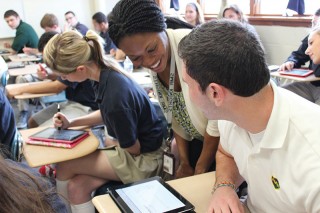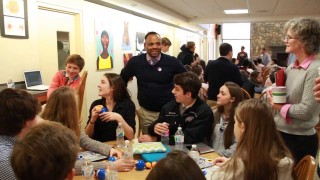The “flipped” AP Calculus classroom at Bullis School shifts the mindset of what a traditional math class looks like, and it’s helped students become more independent, less-stressed learners. Lessons are studied at home, and “homework” is done in class.
Back in 2010, teacher Stacey Roshan decided to completely change the classroom dynamic, starting with how she delivered instruction. “Most of a teacher’s time is spent at the board lecturing to the needs of the classroom as a whole,” she says, “so there’s often not enough time to individualize and customize learning on a personal level.”
Students now watch her recorded lessons outside of class, at their own pace; they can replay sections that confuse them as many times as needed, and ask friends for help. Quizzes are embedded in the videos, serving as learning checks and providing instant feedback. Callout boxes, highlights, and pointers help draw attention to important segments, and videos are programmed to pause automatically at key points, signaling the need for extra attention. These increased levels of interaction, says Ms. Roshan, encourage students to become more resourceful and independent in their learning.
The assignments? They’re done in the classroom, where Ms. Roshan can help students work through their questions and problems in ways that weren’t previously possible. “The ‘flipped’ approach allows me to target individual needs before students even step into my room,” she says. “There’s more time to cover all the required course material, and the classroom has become a supportive, collaborative, calm, inspiring, student-centered, and student-driven environment.”


